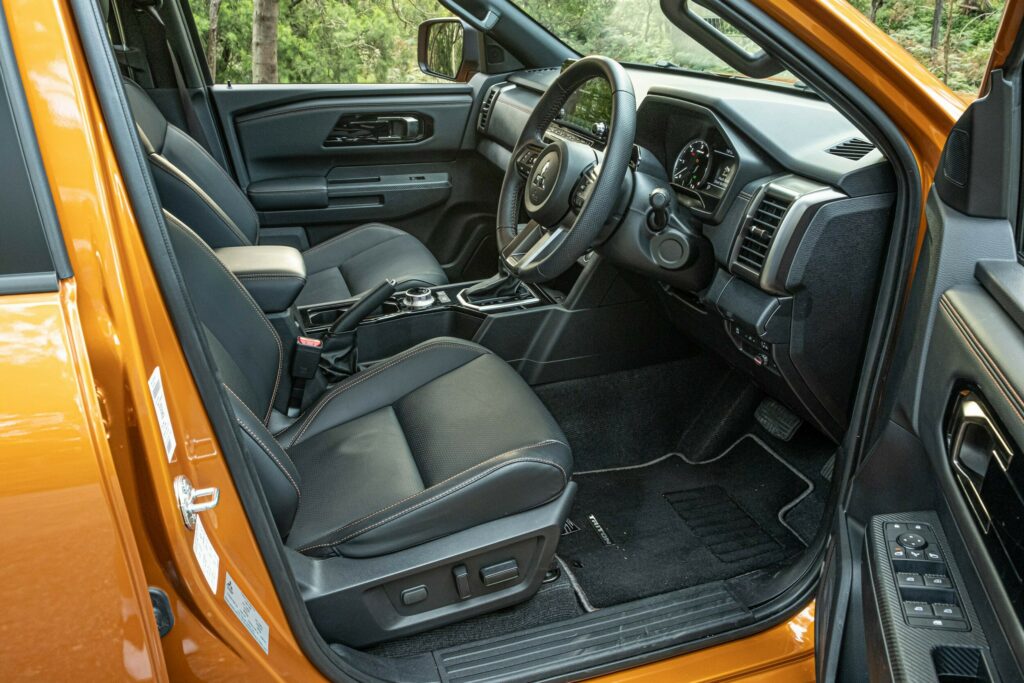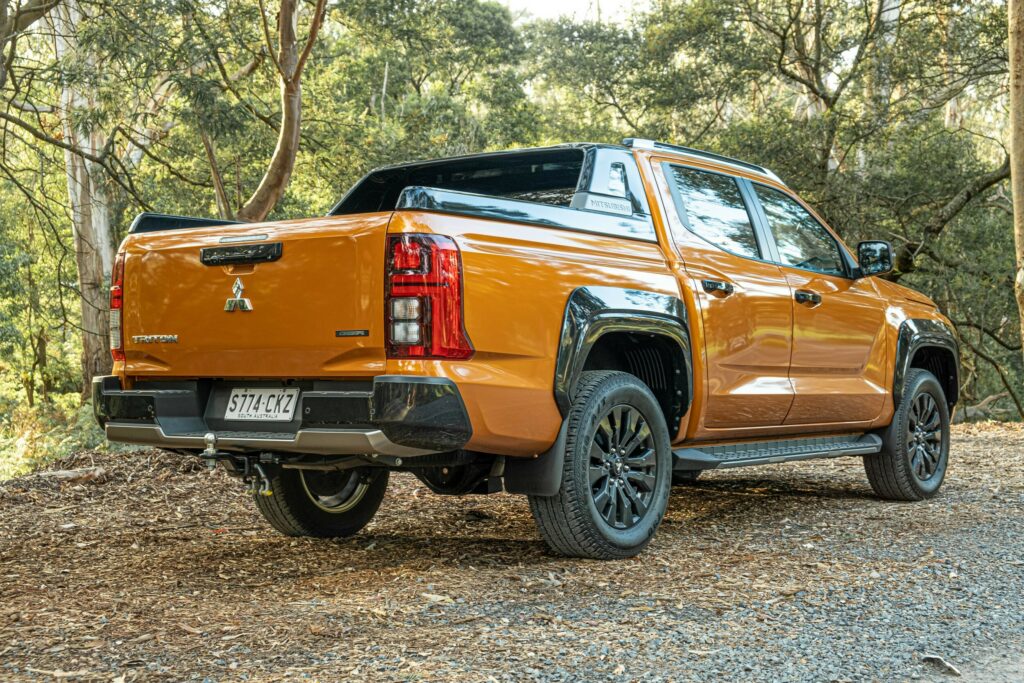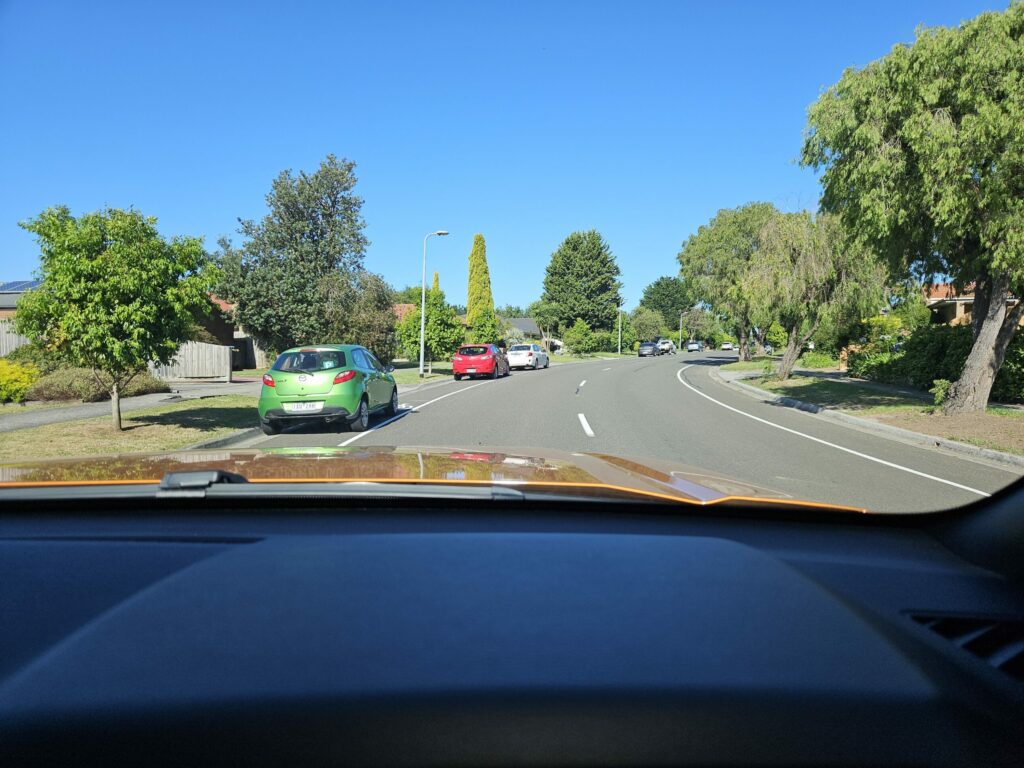To most Americans, the Mitsubishi Triton pickup truck might seem like a bit of an oddity. In the States, Mitsubishi is best known for its collection of SUVs and the budget-friendly (and soon-to-be-discontinued) Mirage hatchback and sedan. However, in many other markets around the world, the Triton that is also known as the L200 in some regions, is one of the brand’s most important and popular models, playing a crucial role in Mitsubishi’s global lineup.
Mitsubishi’s history with pickups goes back to the late 1970s, and since then, they’ve rolled out six generations of the Triton. We first got behind the wheel of the fifth-gen model in its facelifted form back in mid-2019 and were genuinely impressed. But it didn’t take long for the Triton to start feeling outdated, especially with the arrival of the third-generation Isuzu D-Max and the all-new Ford Ranger.
More: Mitsubishi Kills Three SUVs In Australia, Including Pajero Sport
For years, Mitsubishi was in desperate need of a new Triton, and in 2024, the all-new model finally arrived in Australia. We had the chance to spend a week with it in the flagship GSR trim, and fortunately, it feels like a substantial upgrade over the old version. That said, it’s not without its flaws.
QUICK FACTS
Photo Credits: Brad Anderson/Carscoops
Utes Down Under: The Triton’s Tough Competition
Mid-size pickup trucks like the Triton are big business in Australia, where they’re known as utes.Last year, the Ford Ranger took the top spot as the best-selling new vehicle, followed by the Toyota RAV4, Toyota Hilux, and Isuzu D-Max. That’s three pickups in the top four. While the Triton didn’t crack the top 10, the new model certainly has a lot going for it.
The local range consists of the GLX, GLX+, GLX-R, GLS, and the GSR we tested, with prices ranging from AU$43,990 (~$27,000) to AU$65,990 (~$40,500) for the GSR before options and accessories. The example we tested was finished in Yamabuki Orange, a AU$200 (~$120) option that made the pickup a real head-turner.
Same Engine, Better Performance
Unlike the Ford Ranger, which is offered with a handful of different engines, all Triton models are sold with the same four-cylinder unit. It is a 2.4-liter twin-turbo diesel unit with 201 hp (150 kW) and 347 lb-ft (470 Nm) of torque paired to a six-speed automatic transmission. While the most basic version is rear-wheel drive only, all other Triton models have 4WD, including the GSR, which is fitted with Mitsubishi’s Super Select 4WD-II system that includes seven unique terrain drive modes.
Read: Mitsubishi Triton Tuning Contest Includes Everything From Lowriders To Overlanding Campers
Some may hate the way the new Triton looks, while others may love it. Regardless of how you feel, there’s no doubt it commands attention on the road, particularly in bright orange like our test car. During my time with it, I had one gentleman approach me and compliment me on it – something that rarely happens unless I’m driving a pricey sports car. Clearly, it’s got the attention of locals.
Photo Credits: Brad Anderson/Carscoops
Welcome Interior Upgrades
The cabin of the new Triton feels rugged, robust, and well-equipped, but it does not feel as modern as some of its competitors. A key upgrade is the fitment of a 9.0-inch infotainment screen that has wireless Apple CarPlay and wired (shame) Android Auto.
As with some other Mitsubishi models, the graphics and UI of the infotainment system are horribly outdated. The touchscreen is also quite slow to respond to inputs. Fortunately, there is a physical volume knob, something which was missing on the previous-generation model. There are also some handy buttons used as shortcuts for the system.
Elsewhere, there’s a semi-digital gauge cluster with a center display and two traditional gauges. The screen can be configured to display all critical driving info but is no match to the fully digital cluster you’ll find in the Ford Ranger.

A mix of black leather and black plastics dominated the cabin of our tester. One of the nicer touches was the orange contrast stitching and the faux carbon fiber on the doors. Unfortunately, there was also an abundance of piano black plastic on the transmission tunnel and the door handle surrounds. On the plus side, there are plenty of storage cubbies up front, including a large area within the dashboard on the passenger side. A pair of hidden cupholders are also on the dash, located to the right of the steering wheel and the left of the glovebox.
Read: Mitsubishi Triton Loses Payload Capacity To Gain More Buyers In Australia
As the Triton sits on a massive 3,130 mm (123.2-inch) wheelbase, it comes as no surprise that interior room is more than ample. Not only is there heaps of room at the front but there’s also plenty of room at the rear too. A small disappointment is the fact the front passenger seat only offers manual adjustments, despite this being the top-spec model.
The bed offers plenty of space and some tie-down points. Sadly, there are no power outlets. The GSR has a rated payload of 1,030 kg (2,270 lbs) – a hefty gain over the 855 kg (1,884 lbs) of the old model. The braked towing capacity has also swelled from 3,100 kg (6,834 lbs) to 3,500 kg (7,716 lbs). The vehicle we tested was also equipped with a tow bar and a Redarc electronic brake controller (an AU$850 / $522 option).
Photo Credits: Brad Anderson/Carscoops
Noticeably Improved On-Road Manners
Out on the open road, the 2024 Triton GSR combines the drivability and comfort of an SUV with the versatility of a pickup that its predecessor couldn’t quite match.
The first – and perhaps most impressive – part of the driving experience is the ride. Pickups with leaf springs at the rear like this typically have harsh rides that are only softened out once you load up the bed with plenty of weight. The old Triton was much the same. That’s not the case here. Somehow, Mitsubishi has been able to develop the suspension in such a way that the rear remains soft and subtle over bumps, making it a pleasure to drive on a daily basis.
The engine also feels like a solid upgrade over the old model. Packing an extra 23 hp (17 kW) and 29 lb-ft (40 Nm) of torque, the 2.4-liter twin-turbo diesel feels much more spritely than before, giving the Triton plenty of get-up-and-go considering its size. The engine is also relatively refined and free of harsh vibrations and an overbearing, rattly diesel soundtrack.
Mitsubishi claims the Triton GSR can sip an impressive 7.7 l/100 km (equal to 30.5 US mpg) over the combined cycle, but we weren’t able to get close to that and averaged 10.1 l/100 km (23.2 US mpg) during a mix of highway and urban driving.

As mentioned, the GSR is fitted with the automaker’s Super Select 4WD-II system that includes a Torsen center differential. We only had the opportunity to do a little bit of off-roading with the Triton but found it to be sure-footed and more than capable of conquering most terrain without fuss. It can be driven in rear-wheel drive, full-time 4WD, 4HLc where the center diff is locked, and 4LLC where the low gear center diff is locked. There are also Normal, Eco, Gravel, Snow, Mud, Sand, and Rock driving modes.
Safety Tech Is Not Up To Scratch
Plenty of important safety features come standard across the range. These include Rear Cross Traffic Alert, Lane Departure Prevention with Emergency Lane Assist, TrafficSign Recognition, Adaptive Cruise Control, Forward Collision Mitigation, and a Driver Monitoring System. That latter includes a camera behind the steering wheel and is a tad overbearing at times, telling you you’re distracted or drowsy even if you’re not. A notably absent piece of tech is any kind of active lane-keeping assist, which is a shame.
The autonomous emergency braking (AEB) system of the Triton also leaves a lot to be desired. In the photo below, snapped near my house, you’ll notice several cars to the side of the road around a right-hand bend. It’s not uncommon for cars I test to warn me about these parked cars, suspecting I’m about to rear-end them. Usually, a vehicle’s AEB system will realize the cars are in a different lane. Not in the Triton. While cruising around this curve during my week with the Mitsubishi, the AEB briefly hit the brakes on several occasions. It was infuriating, if not borderline dangerous.

A wide array of accessories are available from the factory. These include a AU$3,700 (~$2,300) bull bar, a AU$1,300 (~$800) nudge bar, AU$1,295 (~$800) LightForce driving lamps, AU$1,750 (~$1,100) side protector bars, a $4,800 (~$3,000) canopy, and a AU$4,400 (~$2,700) electric tonneau cover.
Verdict
One of the key appeals of the new Triton is its warranty. In Australia, it comes standard with a five-year, 100,000 km (62,000-mile) warranty, but this can be extended to 10 years/200,000 km (124,000 miles) if you commit to getting it serviced at a Mitsubishi dealer annually for the first 10 years.
All told, the 2024 Mitsubishi Triton GSR is a compelling option at the price point. Yes, the cabin does not feel as modern as some of its competitors, and it is lacking on the technology front, but it nails the key areas needed to make it a compelling daily driver that’s also up for any torturous weekend adventures buyers may throw at it.






























































































